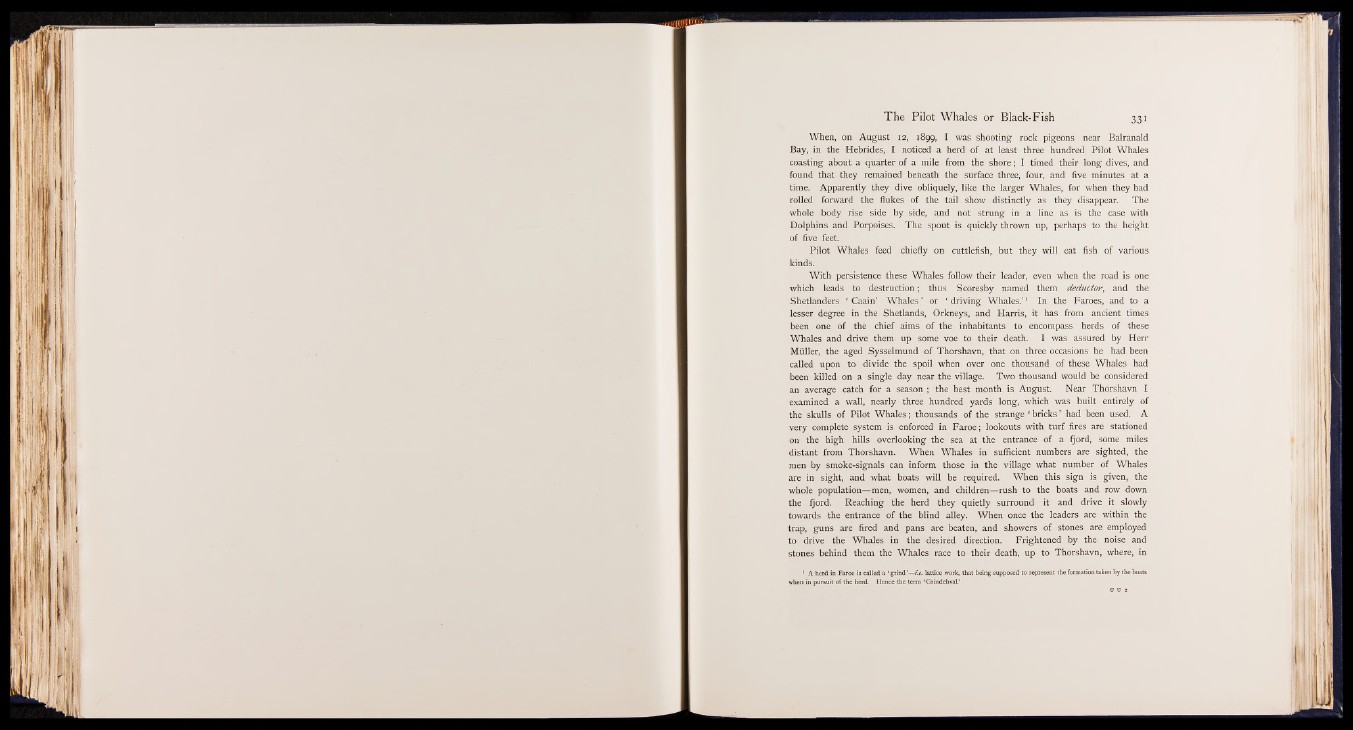
When, on August 12, 1899, I was shooting rock pigeons near Balranald
Bay, in the Hebrides, I noticed a herd of at least three hundred Pilot Whales
coasting about a quarter of a mile from the shore; I timed their long dives, and
found that they remained beneath the surface three, four, and five minutes at a
time. Apparently they dive obliquely, like the larger Whales, for when they had
rolled forward the flukes of the tail show distinctly as they disappear. The
whole body rise side by side, and not strung in a line as is the case with
Dolphins and Porpoises. The spout is quickly thrown up, perhaps to the height
of five feet.
Pilot Whales feed chiefly on cuttlefish, but they will eat fish of various
kinds.
With persistence these Whales follow their leader, even when the road is one
which leads to destruction; thus Scoresby named them deductor, and the
Shetlanders ‘ Caain’ Whales ’ or ‘ driving Whales.’ 1 In the Faroes, and to a
lesser degree in the Shetlands, Orkneys, and Harris, it has from ancient times
been one of the chief aims of the inhabitants to encompass herds of these
Whales and drive them up some voe to their death. I was assured by Herr
Müller, the aged Sysselmund of Thorshavn, that on three occasions he had been
called upon to divide the spoil when over one thousand of these Whales had
been killed on a single day near the village. Two thousand would be considered
an average catch for a season ; the best month is August. Near Thorshavn I
examined a wall, nearly three hundred yards long, which was built entirely of
the skulls of Pilot Whales; thousands of the strange * bricks ’ had been used. A
very complete system is enforced in Faroe; lookouts with turf fires are stationed
on the high hills overlooking the sea at the entrance of a fjord, some miles
distant from Thorshavn. When Whales in sufficient numbers are sighted, the
men by smoke-signals can inform those in the village what number of Whales
are in sight, and what boats will be required. When this sign is given, the
whole population— men, women, and children— rush to the boats and row down
the fjord. Reaching the herd they quietly surround it and drive it slowly
towards the entrance of the blind alley. When once the leaders are within the
trap, guns are fired and pans are beaten, and showers of stones are employed
to drive the Whales in the desired direction. Frightened by the noise and
stones behind them the Whales race to their death, up to Thorshavn, where, in
1 A herd in Faroe is called a ‘ grind ’— i.e. lattice work, that being supposed to represent the formation taken by the boats
when in pursuit of the herd. Hence the term ‘ Grindehval.’
u u 2